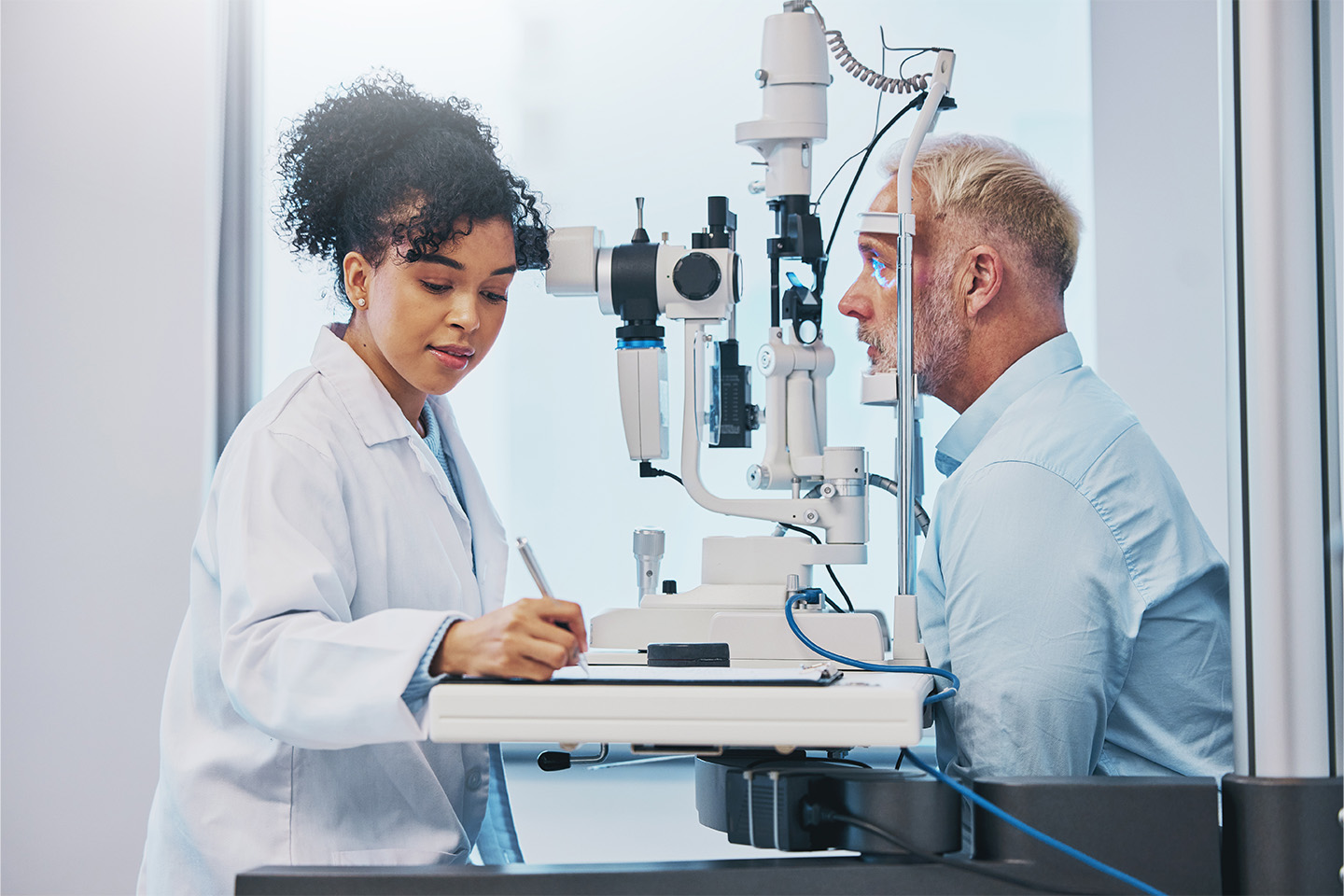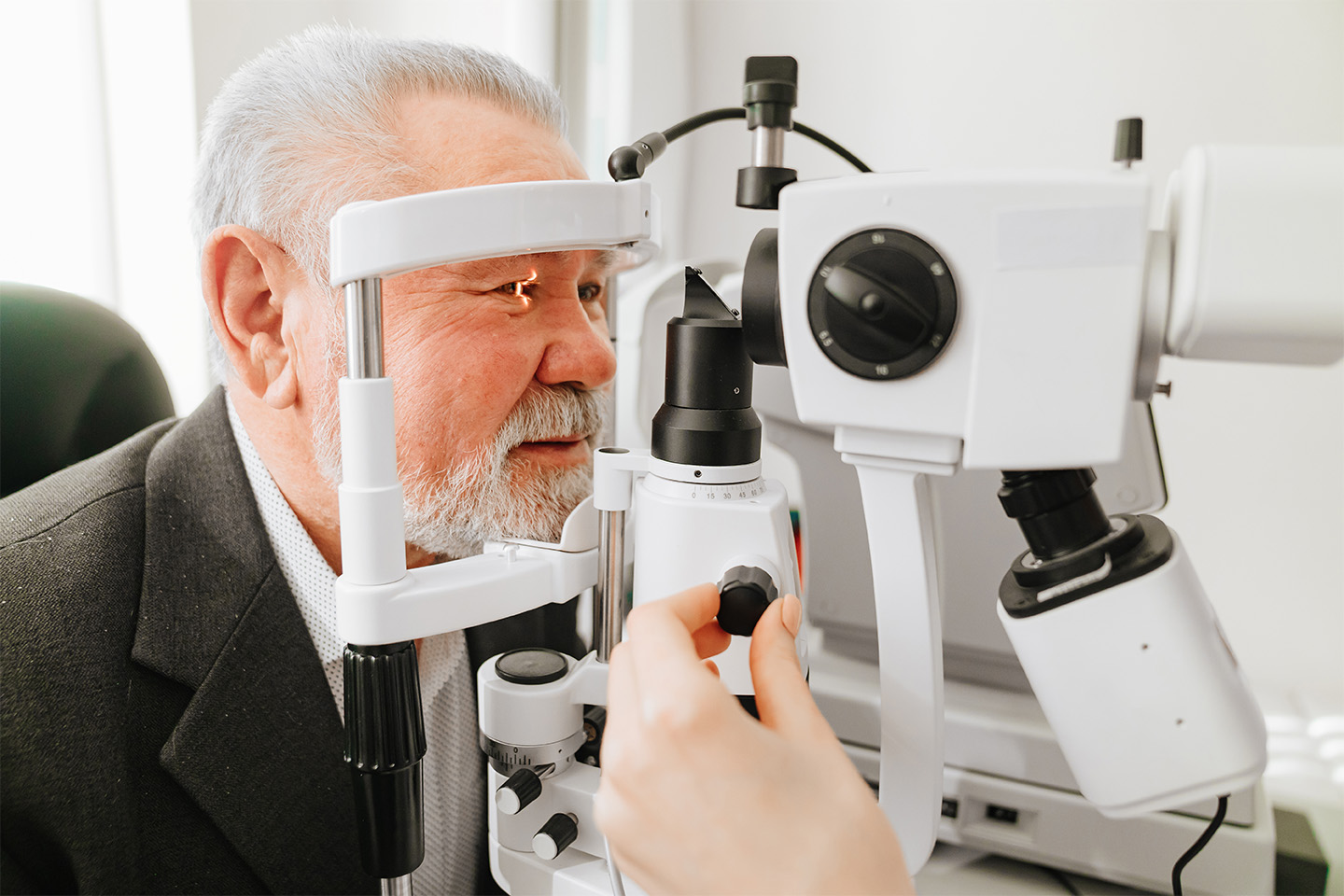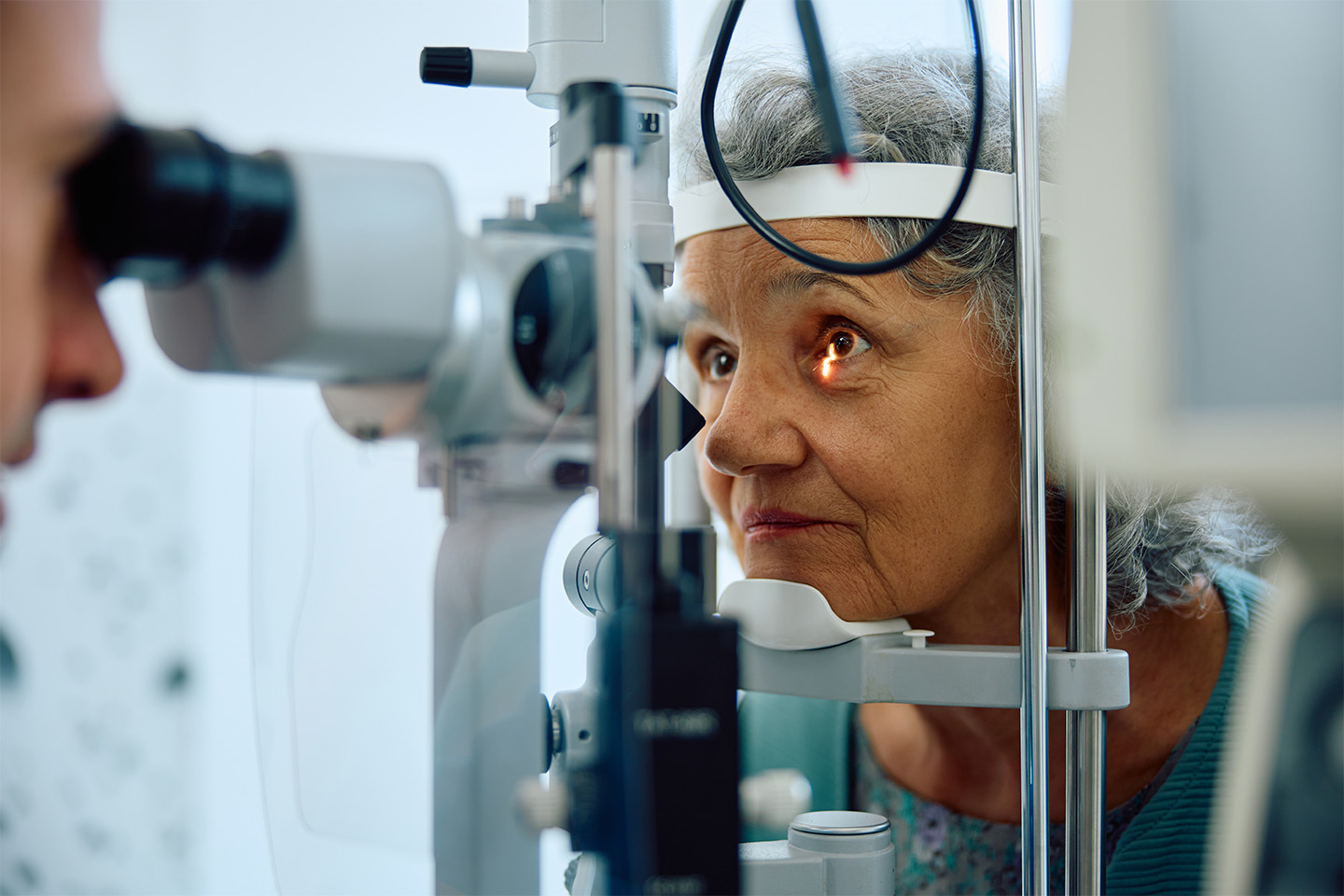Are You Seeing Early Signs of Cataracts?

It’s common for our vision to change with age. Sometimes, these changes can be an indication of cataract development.
What Are Cataracts?
Cataracts are a common condition affecting an estimated 24.4 million people age 40 and older in the U.S. Each eye has a natural, flexible lens that refracts light rays entering the eye, helping to focus the light and create a clear, crisp image. However, proteins in the lens begin to break down with age and cloud the lens, forming a cataract. There are different types of cataracts, depending on where it forms on the lens. Without treatment, cataracts can eventually culminate in vision loss or even lead to blindness.
What Is the First Sign of Cataracts?
Cataracts typically develop slowly over the years. Some types of cataracts may progress more quickly than others, and younger individuals or those with certain medical conditions like diabetes may experience faster development. Most often, though, cataracts are not noticed until years, sometimes decades, after they’ve begun to develop. It’s key to watch for early signs.
Blurry or cloudy vision is often the first sign of cataracts. Other early symptoms that may indicate the presence of cataracts include:
- Color changes: Colors may appear dull or yellowish.
- Monocular diplopia: One eye has double vision, which is noticeable when the other eye is covered.
- Sensitivity to light: Clouded lenses cause light to be diffracted, or scattered, as it enters the eye, which may lead to glare, light sensitivity, and halos around bright lights.
- Reduced vision at night: Cataracts reduce the amount of light entering the eye, making it more difficult to see in dim light and at night.
- Frequent prescription changes: As cataracts continue to grow, your corrective lens prescription may be more inconsistent.
Noticing Symptoms? Here’s What To Do
Schedule an appointment with your optometrist or ophthalmologist as soon as you notice any of these symptoms or other changes to your vision. Our cataract self-test can help you determine if it’s time for an evaluation. Cataracts can be diagnosed only with specific tests that your provider can perform, including a visual acuity test, slit lamp examination, or retina exam.
If you find yourself with a cataract diagnosis, don’t worry: Cataracts can be removed and your vision restored with cataract surgery. This outpatient procedure is safe and effective, and millions of cataract surgeries are performed each year. A surgeon simply replaces the cloudy lens with an artificial lens made of acrylic, silicone, or plastic. The expert team at Kleiman Evangelista Eye Centers of Texas will help you understand the available lens options to help you determine the best one for your vision goals and lifestyle.
How Can I Prevent Cataracts?
Unfortunately, cataracts cannot be prevented, and your risk may be elevated depending on certain environmental, lifestyle, and genetic factors. You can manage cataracts in the early stages by using brighter lights when reading or at a computer, wearing anti-glare sunglasses, or updating your corrective lens prescription. Ultimately, corrective lenses won’t be able to compensate for the condition once the cataracts are advanced enough to seriously impair your vision.
Trust the Experts at Kleiman Evangelista Eye Centers
Our team of world-class doctors is here to help you manage and correct your cataracts. We’re trained to use the most advanced technology and offer the latest lens options for your safety, comfort, and best outcomes. Request your appointment today with Texas’ cataract surgery experts.









